Team members:
Agathe Malbet, Hanjun Chu, Julia Knabe, Mustafa Terzioglu, Arezou Mortazavi
My role:
User research, workshop facilitation, service design, UX/UI design
Timeline:
5 months (2021-2022)
Mentor:
Gonzalo Sanchidrian (IBM)

Why?
When new students arrive at Linköping University (LiU), they are looking for some necessities to settle in, no matter if they are Swedish, international or exchange students. Newcomers tend to buy these things first-hand in shops, although the second-hand culture is very prominent in Sweden. There are several options to find furniture and household appliances in local second-hand shops, in the LiU second-hand shop, on FB marketplace, or in flea market groups. Regardless of whether students are opting for a first- or second-hand option, they face the problem of transporting heavy and large items home.
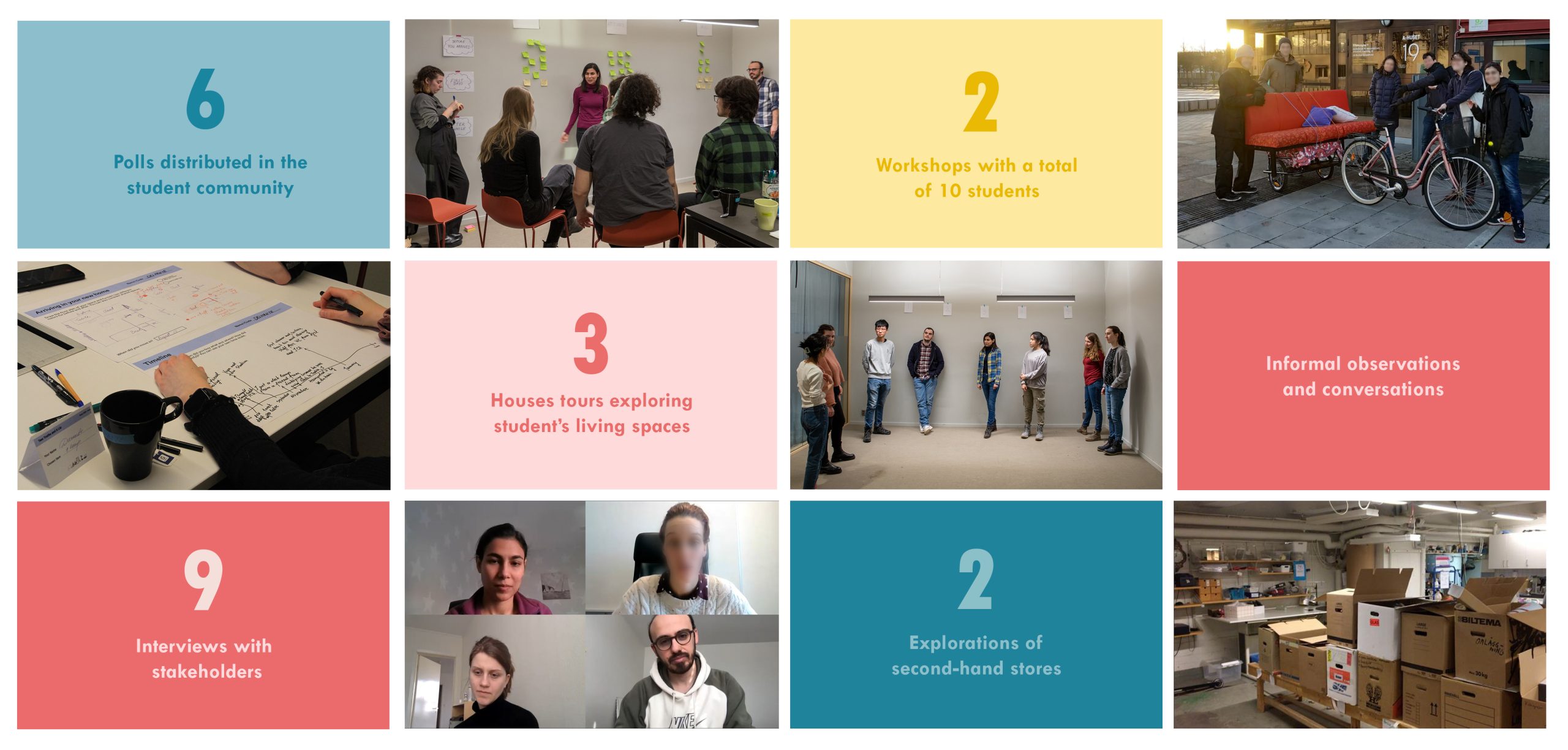
Insights from the user research
Most students stay for a limited period, ranging between 5 months and 5 years, depending on the length of their exchange or their program. At the end of their time at LiU, they want to sell the items they cannot take with them to their next destination. Since many students are selling at the same time, there is an oversupply of things and too little demand. Dumping becomes a problem. Items of good condition that new students could make good use of. Especially in summer, there is a large gap in time between students who leave and students who arrive. We believe that a system could better organize the available resources. With a considerable number of students coming each semester, this could make a big impact.
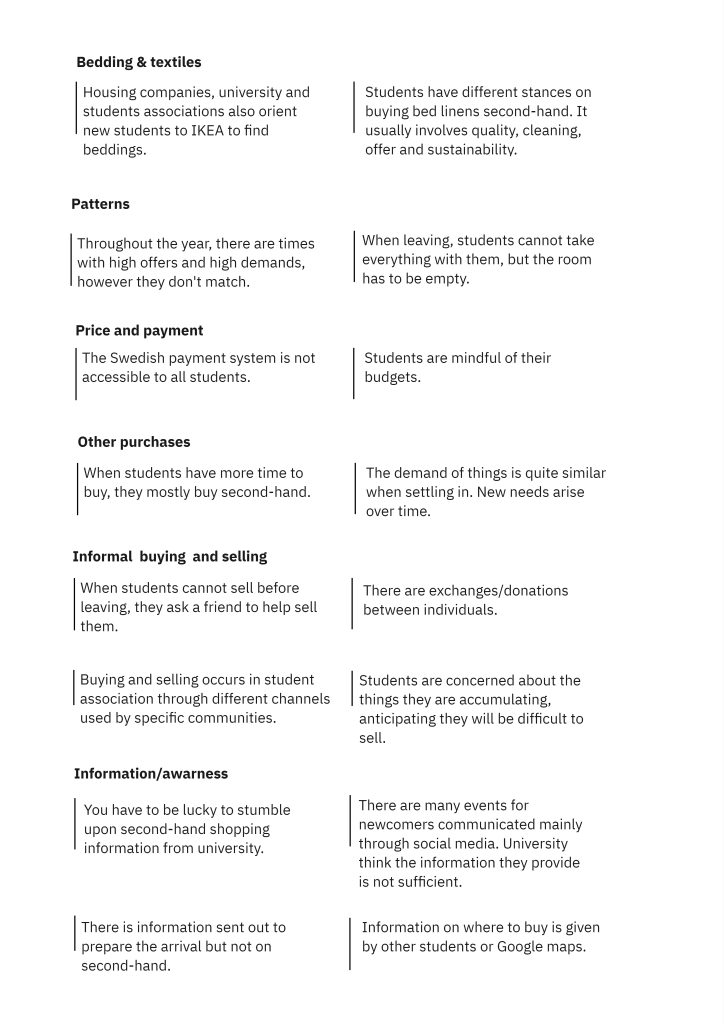
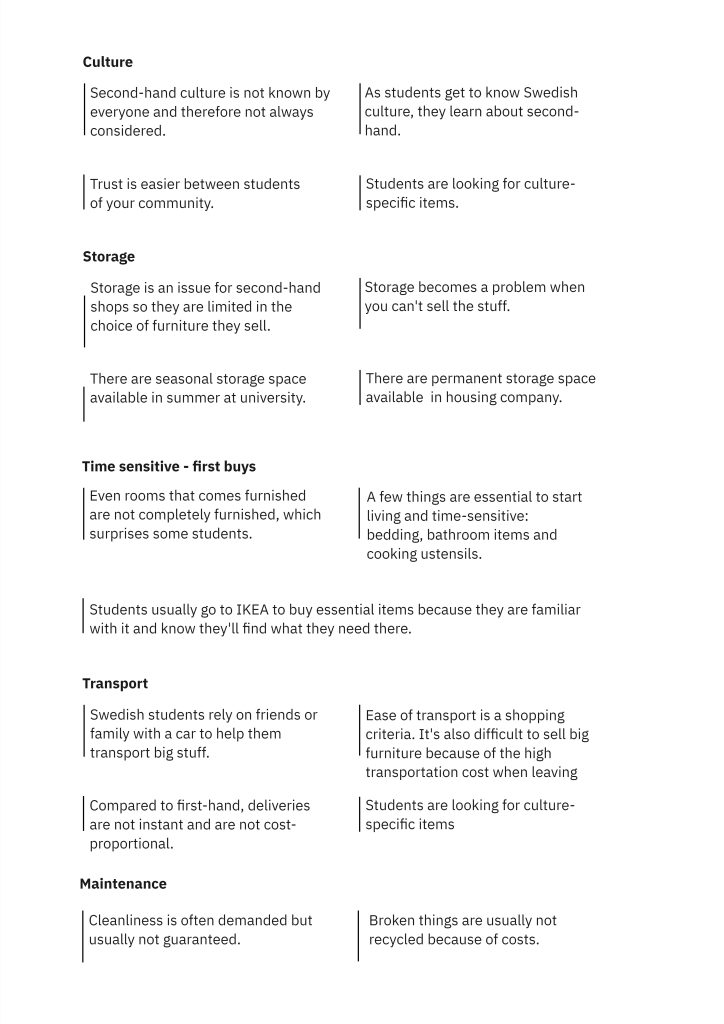
Stakeholder Map
Our stakeholder map enlarged with the new information we received during the interviews. Stakeholders are in contact (directly/indirectly). Many of the stakeholders belong to the university context, such as administrative functions of the university and student associations. Local first- and second-hand shops operate independently of the university network, yet they are important players in the purchase of furniture and other commodities for students. Housing companies are also important stakeholders, as they provide student accommodation and work closely with cleaning and recycling companies.
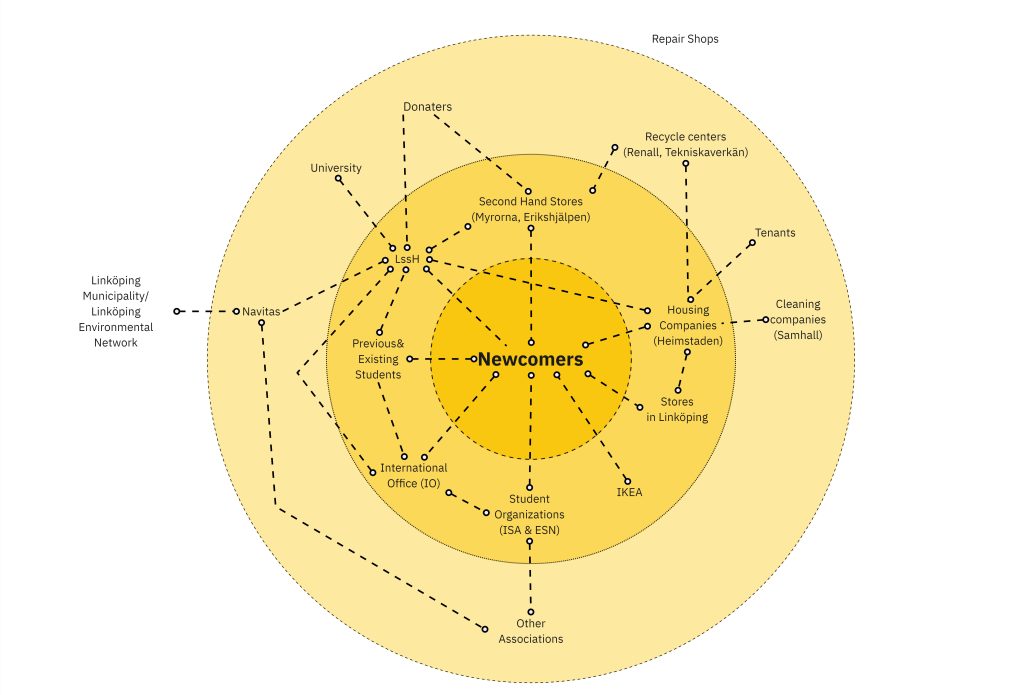
How?
After conducting several workshops with students and interviewing numerous stakeholders, we gained a more profound understanding of the existing system, identified pain points among the actors, and learned about their expectations, habits, and motivations. Through discussions with other stakeholders, we uncovered additional opportunities to establish a service centered around second-hand furniture.
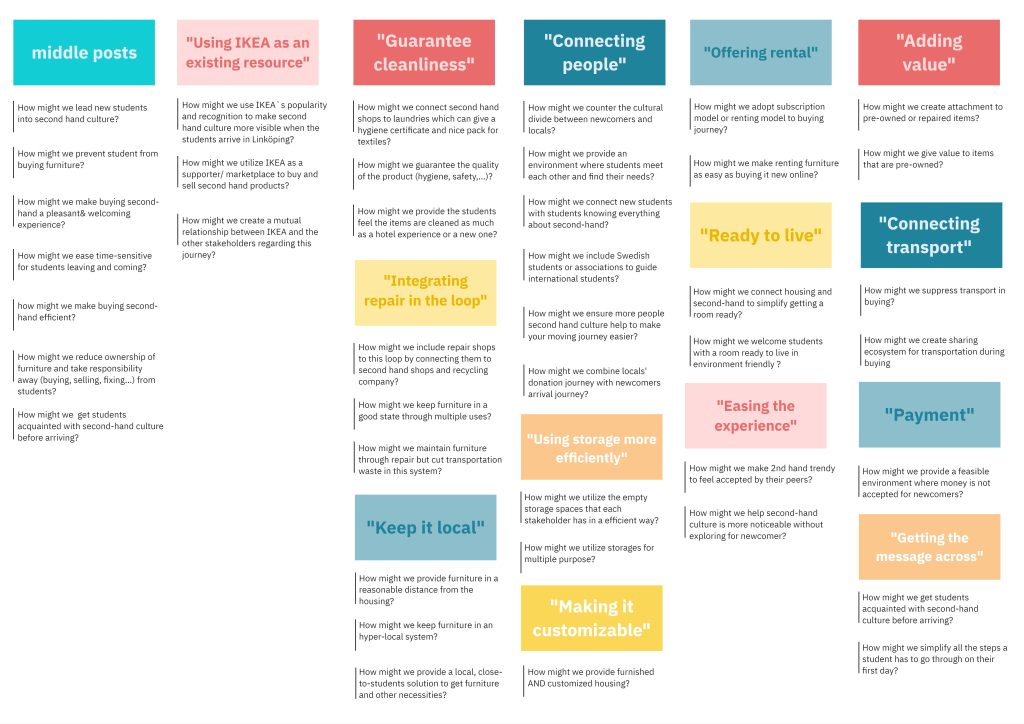
what?
The research phase and insights led us creating both proto-personas and journey maps to comprehend the whole journey of students’ buying and selling habits. The user journey map helped us to get an overview of the experience including pain points, feelings and thoughts during the journey. In line with the overall journey, we further illustrate one specific example of a product purchase. This provides us insight into channels, item-related challenges and motivations. For instance, the student faces different challenges such as transportation, lack of trust, and hygienic concerns while buying a rug.
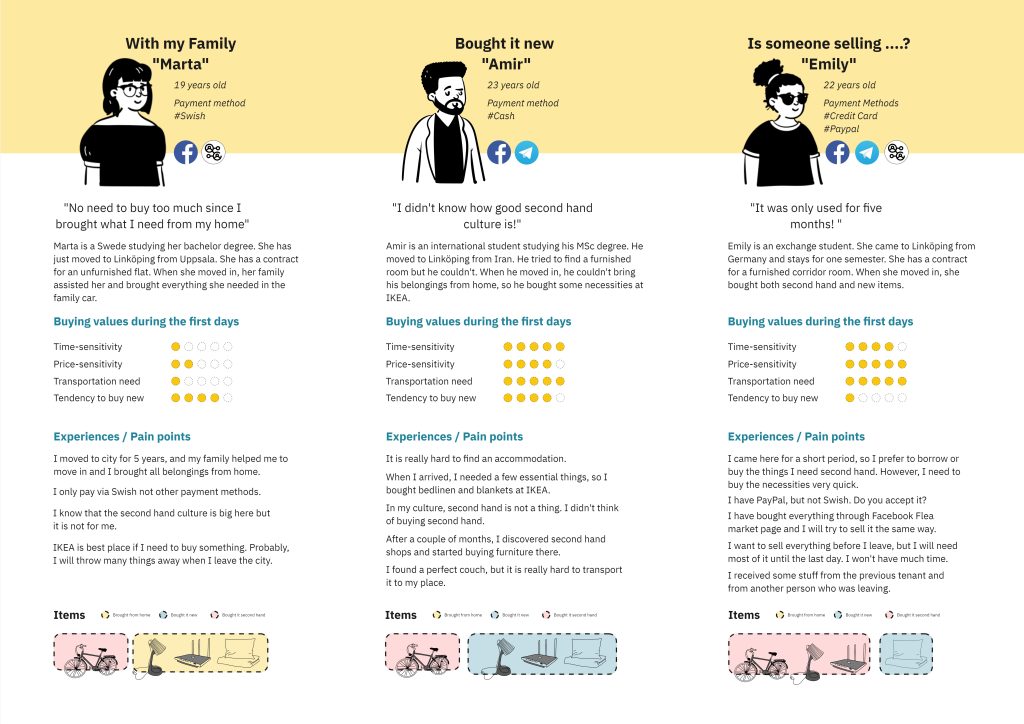
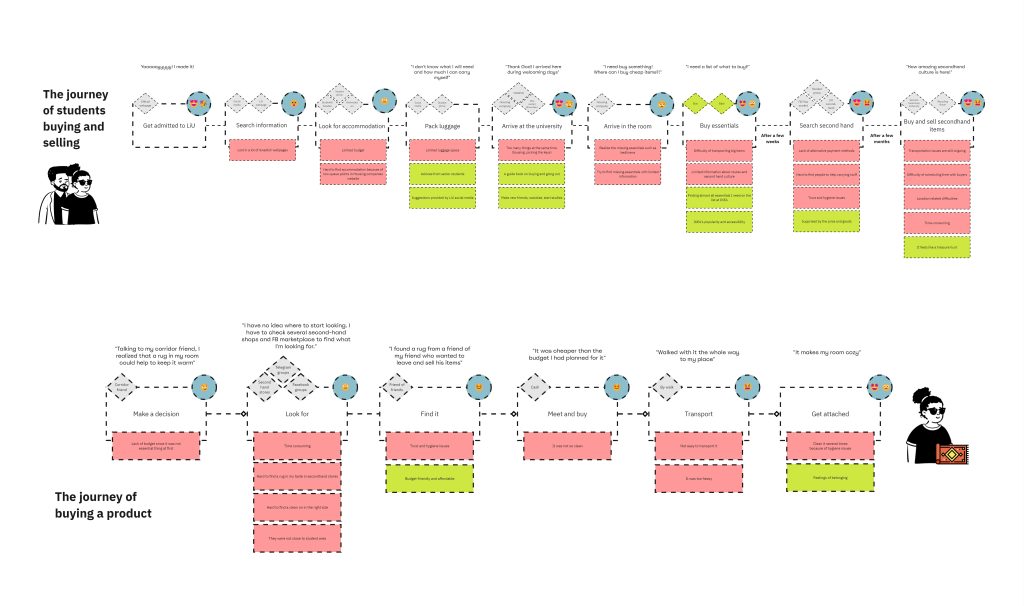
How might we questions
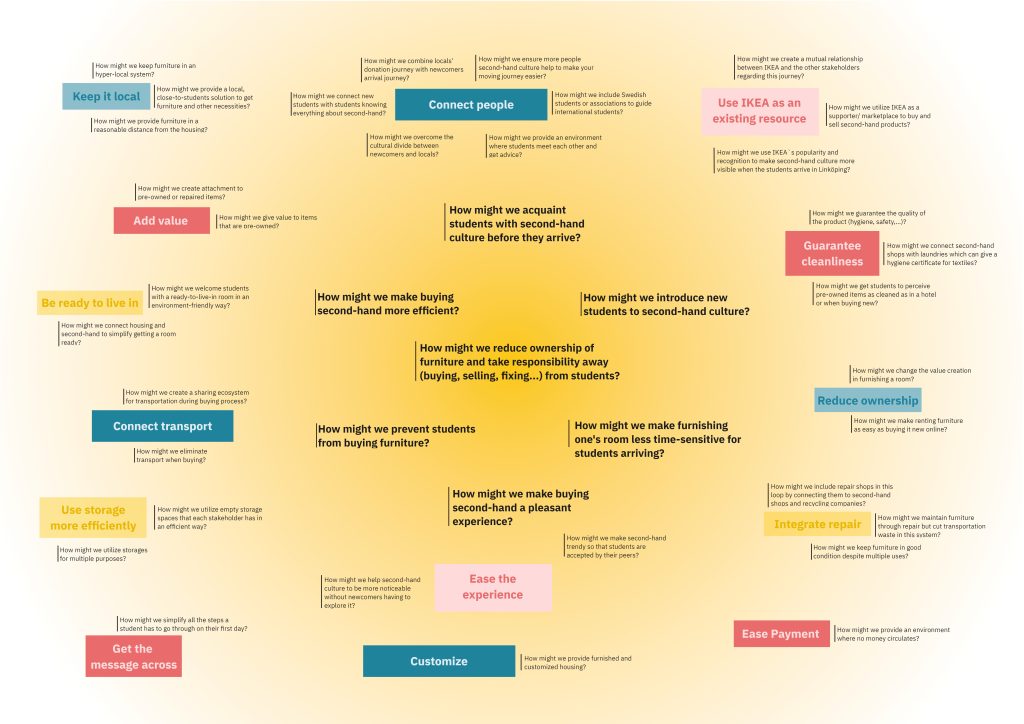
Ideating , Lego prototyping and testing
At all stages of the process, stakeholders face diverse challenges and only know to some extend what others are doing. With a system giving a framework, resources could be distributed more efficiently. Offering a service solution, will make the arrival and departure period of students easier and less stressful. The concepts we developed were rooted in hyperlocal solutions, leveraging existing resources to create a stress-free, time-efficient journey without the need for ownership, all while adding diverse value. Moreover, we recognized that maintaining the solution on a local scale would be a crucial element in ensuring the concept’s benefit to all stakeholders. Following ideation sessions, we prototyped some of these ideas and tested them with students as our target group.
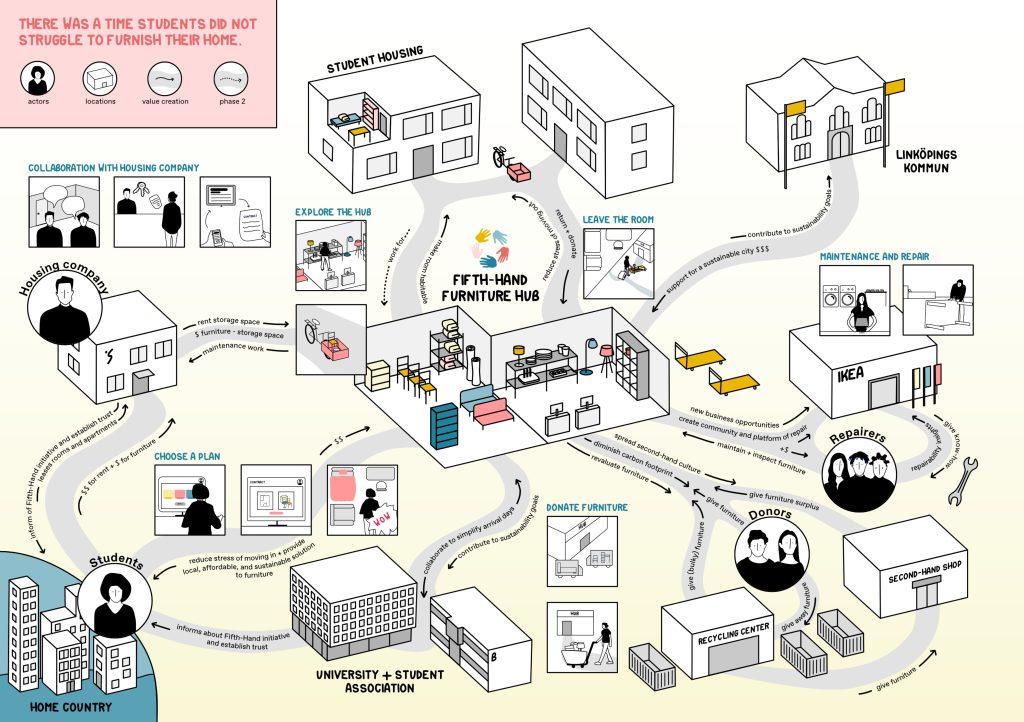
Prototype and user testing
Final concept
Fifth-Hand provides a room-based, hyperlocal rental solution for furniture and household items, offering various plans. By passing down pre-owned items to successive generations of students, this approach keeps the furniture in circulation within local communities. Bulky furniture is included in the accommodation, while other essentials can be sourced from nearby furniture hubs. This service streamlines the student moving process and collaborates with stakeholders to promote sustainability in local communities.
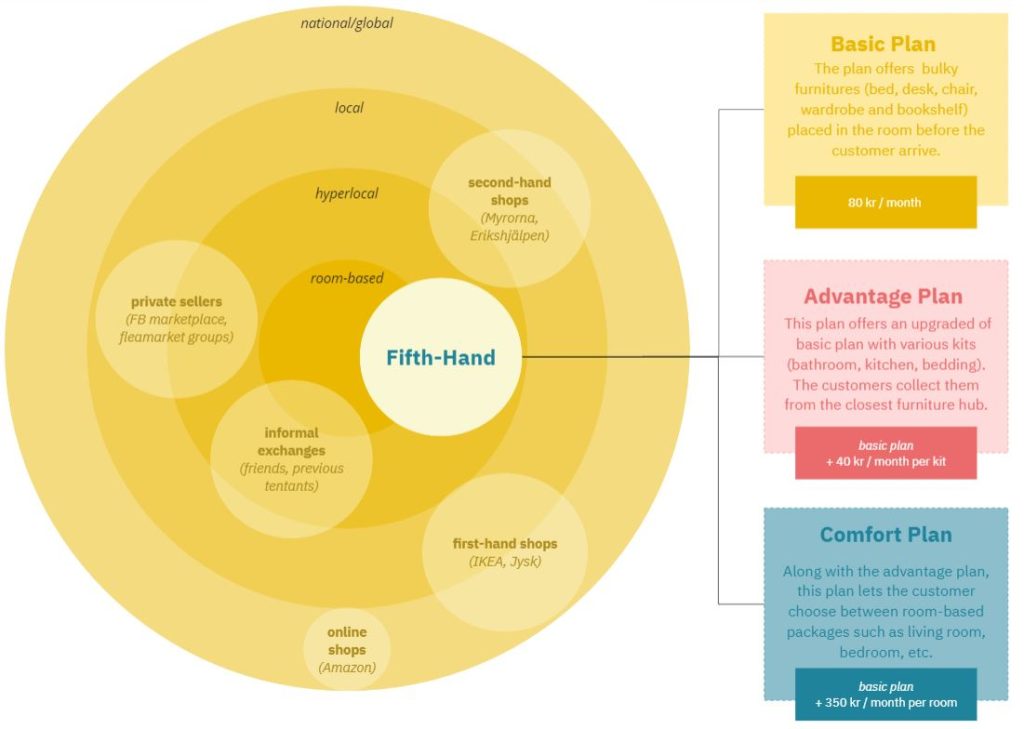
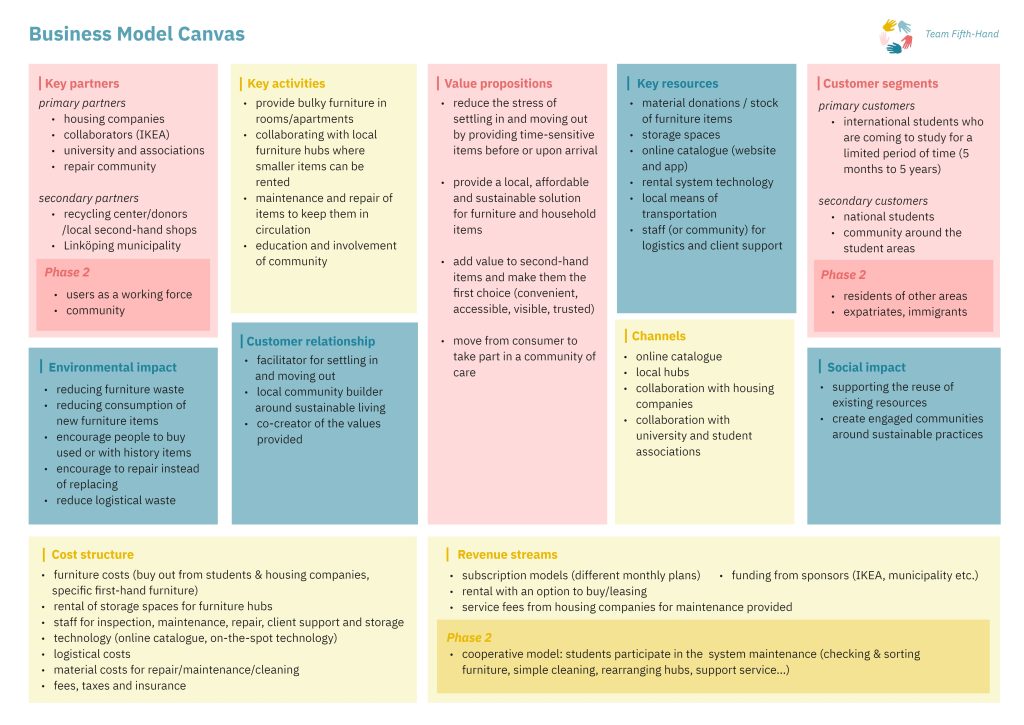
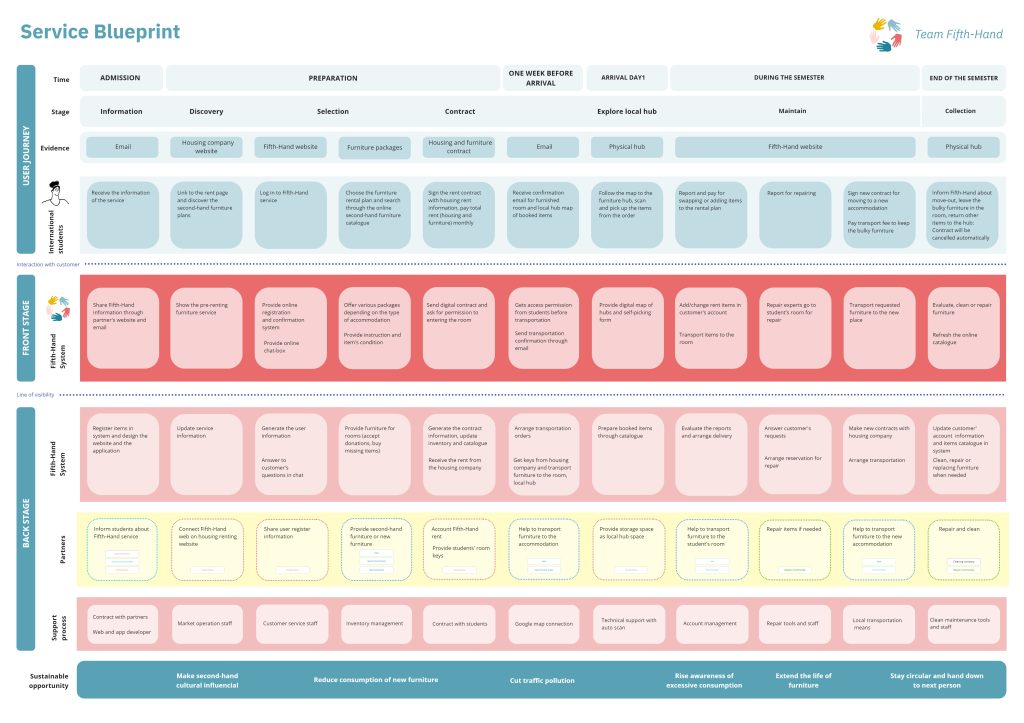
Userflow and Hi-fidelity prototype
Building on the feedback and insights gathered from our target users and stakeholders, we developed a prototype for a secondhand furniture rental platform.
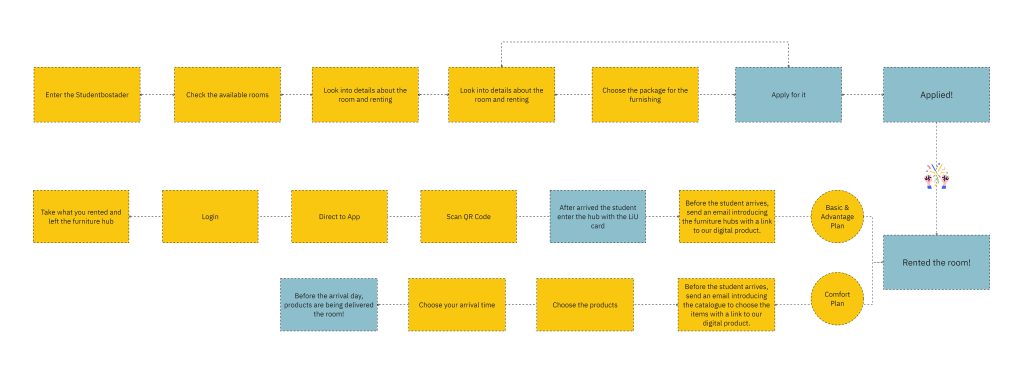
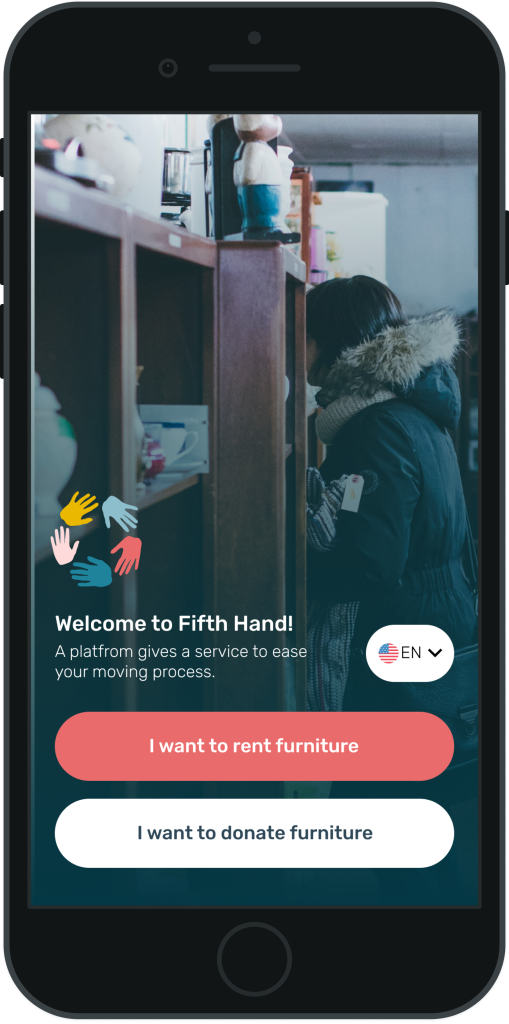
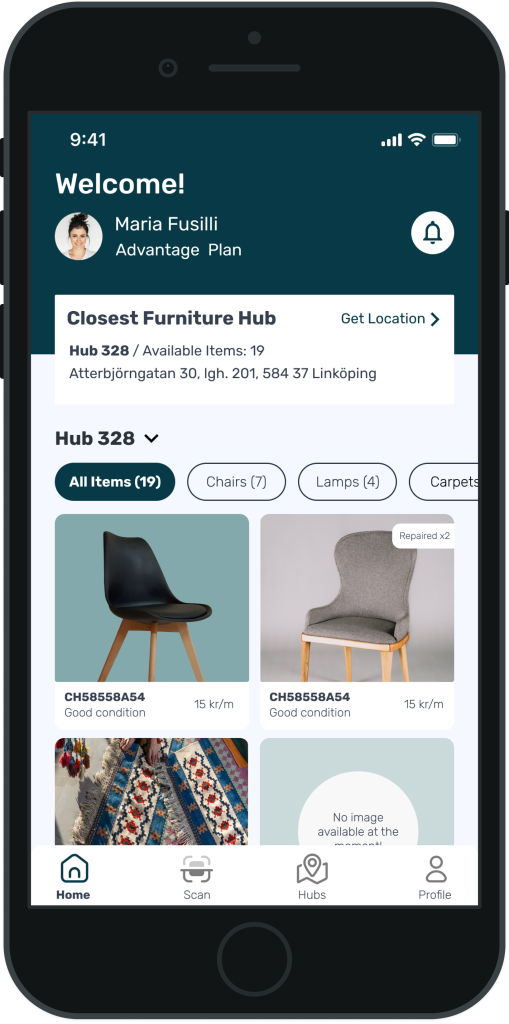
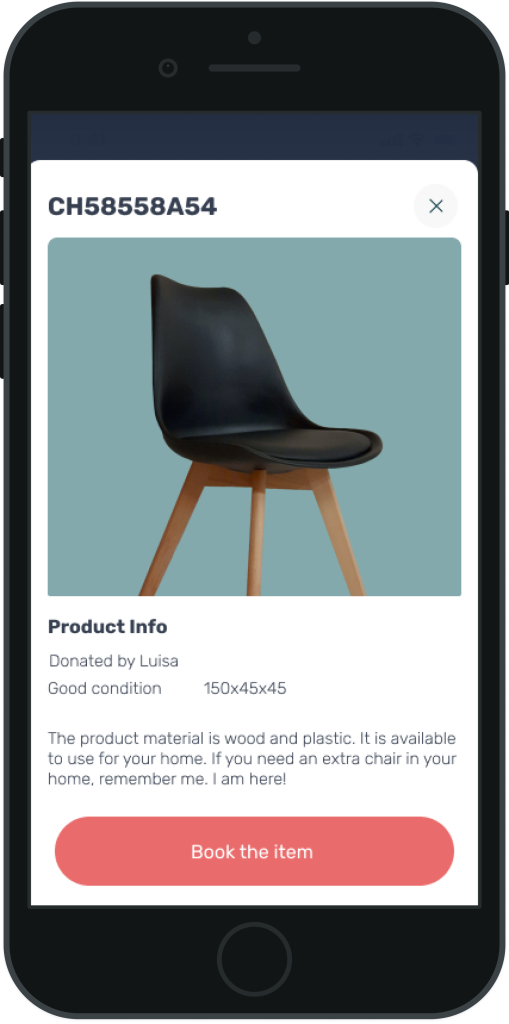
High-fidelity mobile app prototype
To complement this, we added a new feature to the existing house rental company website, enabling them to offer tailored plans for providing bulky furniture in the rooms. While bulky furniture is provided in the accommodations, other essentials can be sourced from nearby furniture hubs, making it a convenient and sustainable option.
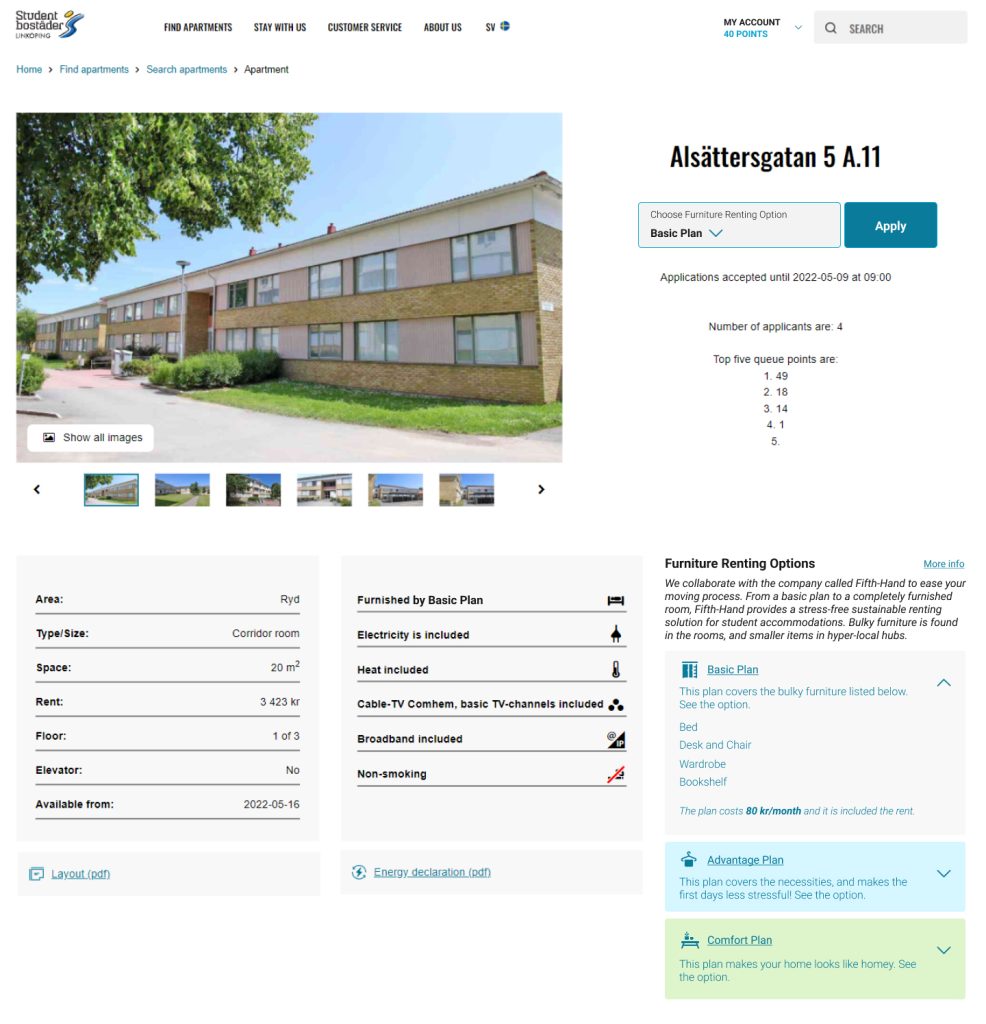
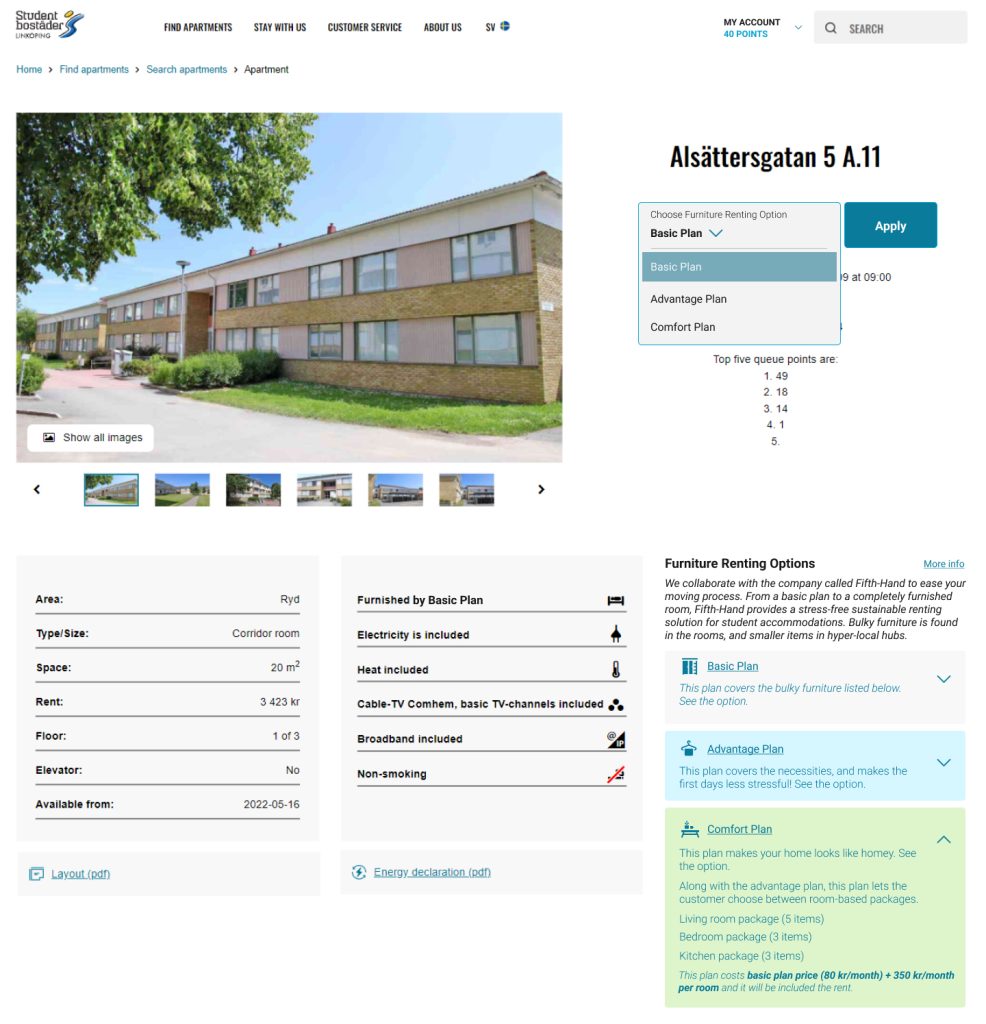
Reflection:
This project taught me about user-centric design, sustainable services, and collaboration. Emphasizing the significance of incorporating insights from various stakeholders to achieve optimal outcomes. It also underscored the importance of considering local needs and possibilities when introducing a new service.
